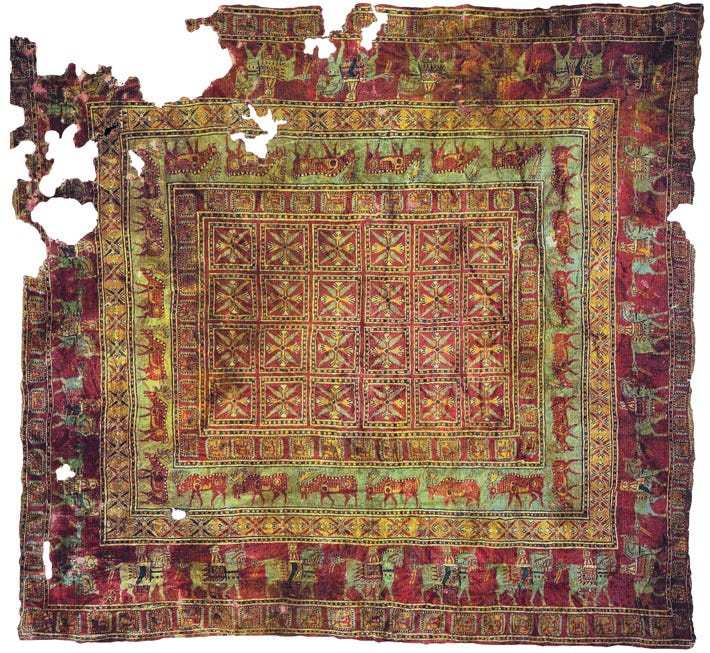The Crimson Worm
Of Bugs and Colour
“Red, I said. Sudden, red.”
Robert Haas The Problem of Describing Colour
There are a lot of ways to get to intense permanent red, and it seems that many of these paths are strewn with the bodies of insects.
The Oldest carpet in the world was found frozen in the Altai Mountains of Siberia in 1948. Its 1,250,000 double knots depict warriors on horseback an…



